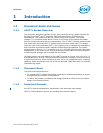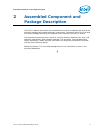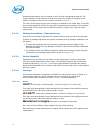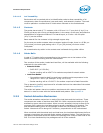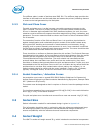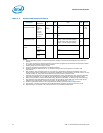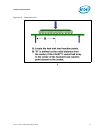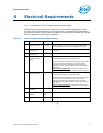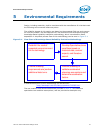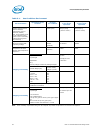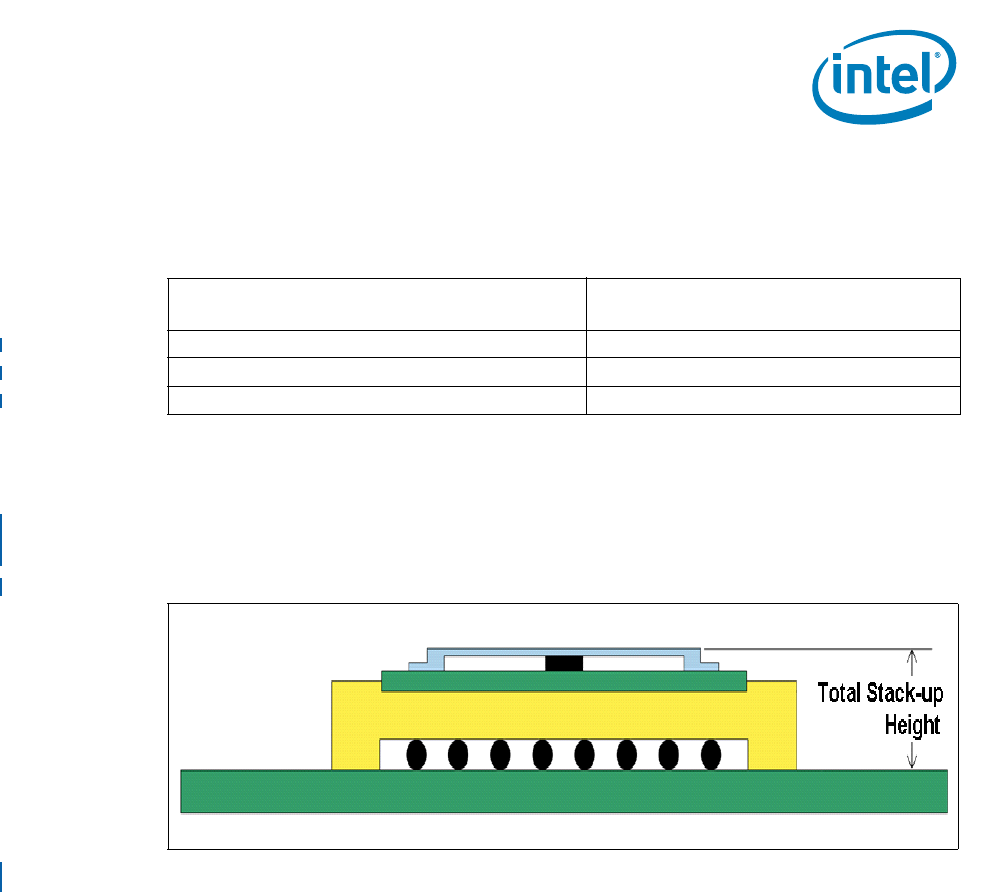
LGA 771 Socket Mechanical Design Guide 15
Mechanical Requirements
3.5 Package/Socket Stackup Height
Table 3-1 provides the stackup height of the processor package and LGA771 socket.
Notes:
1. Preliminary Guidance. This data is provided for information only, and should be derived from: (a) the height
of the socket seating plane above the motherboard after reflow, given in the LGA771 Socket Mechanical
Design Guide with its tolerances; (b) the height of the package, from the package seating plane to the top
of the IHS, and accounting for its nominal variation and tolerances that are given in the corresponding
processor datasheet.
Notes:
1. Not to scale. Shown for illustrative purposes only.
3.6 Socket Loading Specifications
Table 3-2 provides dynamic and static load specifications for the LGA771 socket. These
mechanical load limits should not be exceeded during heatsink assembly, mechanical
stress testing or standard drop and shipping conditions. The heatsink attach solutions
must not include continuous stress onto the socket with the exception of a uniform load
to maintain the heatsink-to-processor thermal interface. Also, any mechanical system
or component testing should not exceed these limits. The socket body should not be
used as a mechanical reference or load-bearing surface for thermal or mechanical
solutions.
Table 3-1. Intel
®
Xeon
®
5000 Sequence Package and Socket Stackup Height
Processor
Integrated Stackup Height
1
(mm)
From Top of Board to Top of IHS
Dual-Core Intel® Xeon® Processor 5000 Series 7.628 - 8.120
Dual-Core Intel® Xeon® Processor 5100 Series 7.693 - 8.155
Quad-Core Intel® Xeon® Processor 5300 Series 7.604 - 8.124
Figure 3-1. Cross-sectional view of Package / Socket stackup height
1



